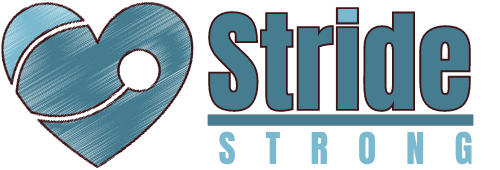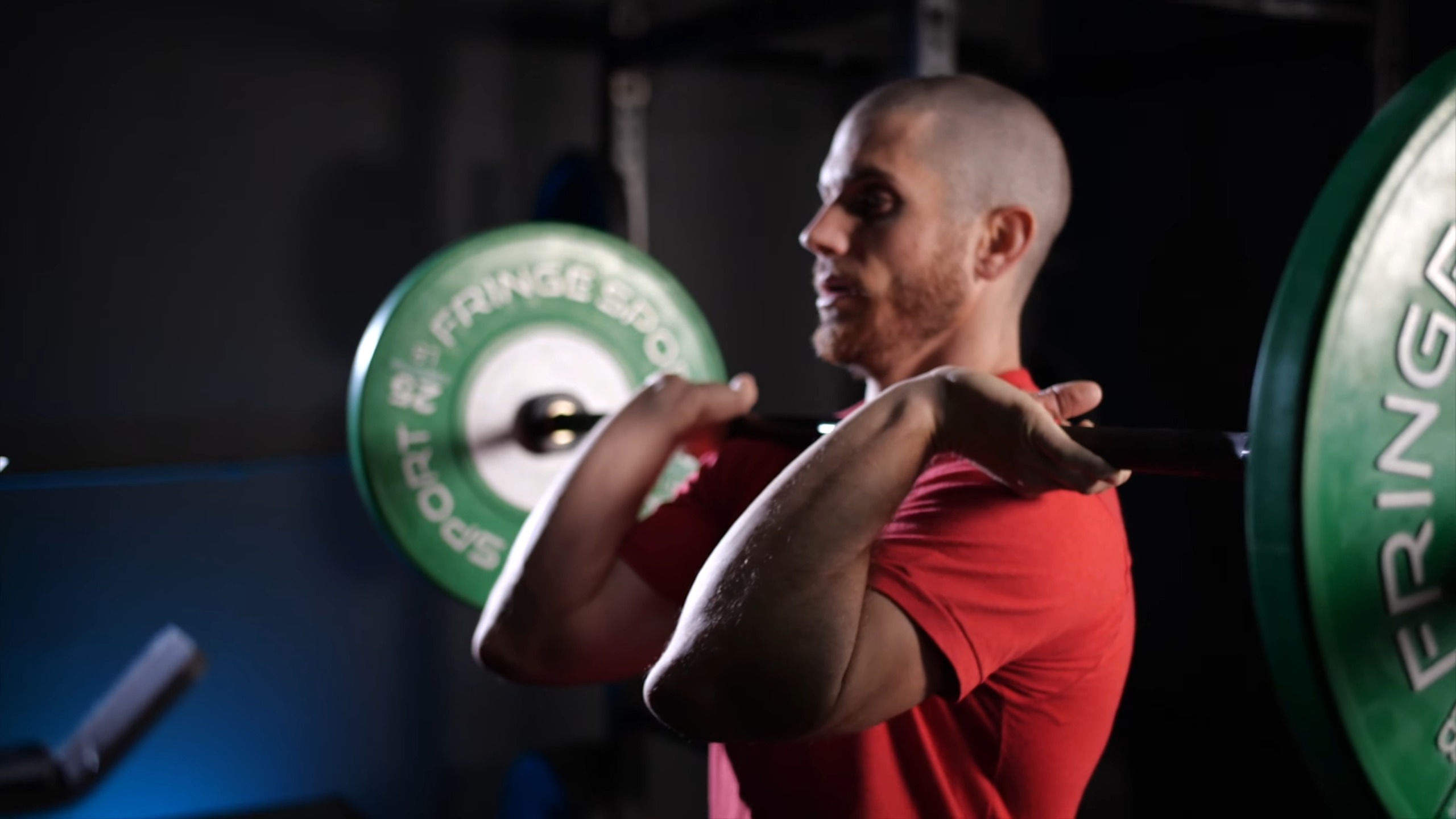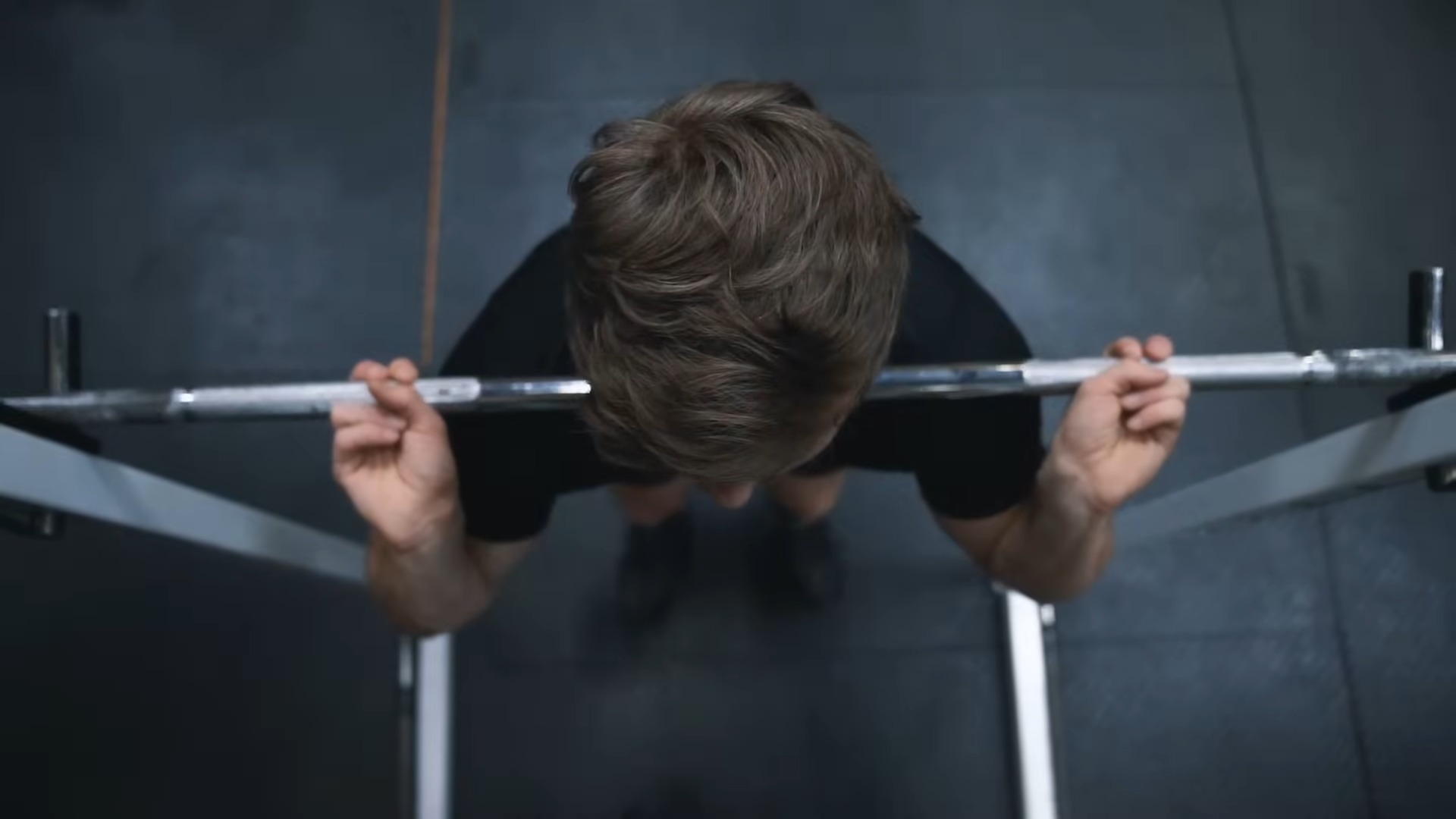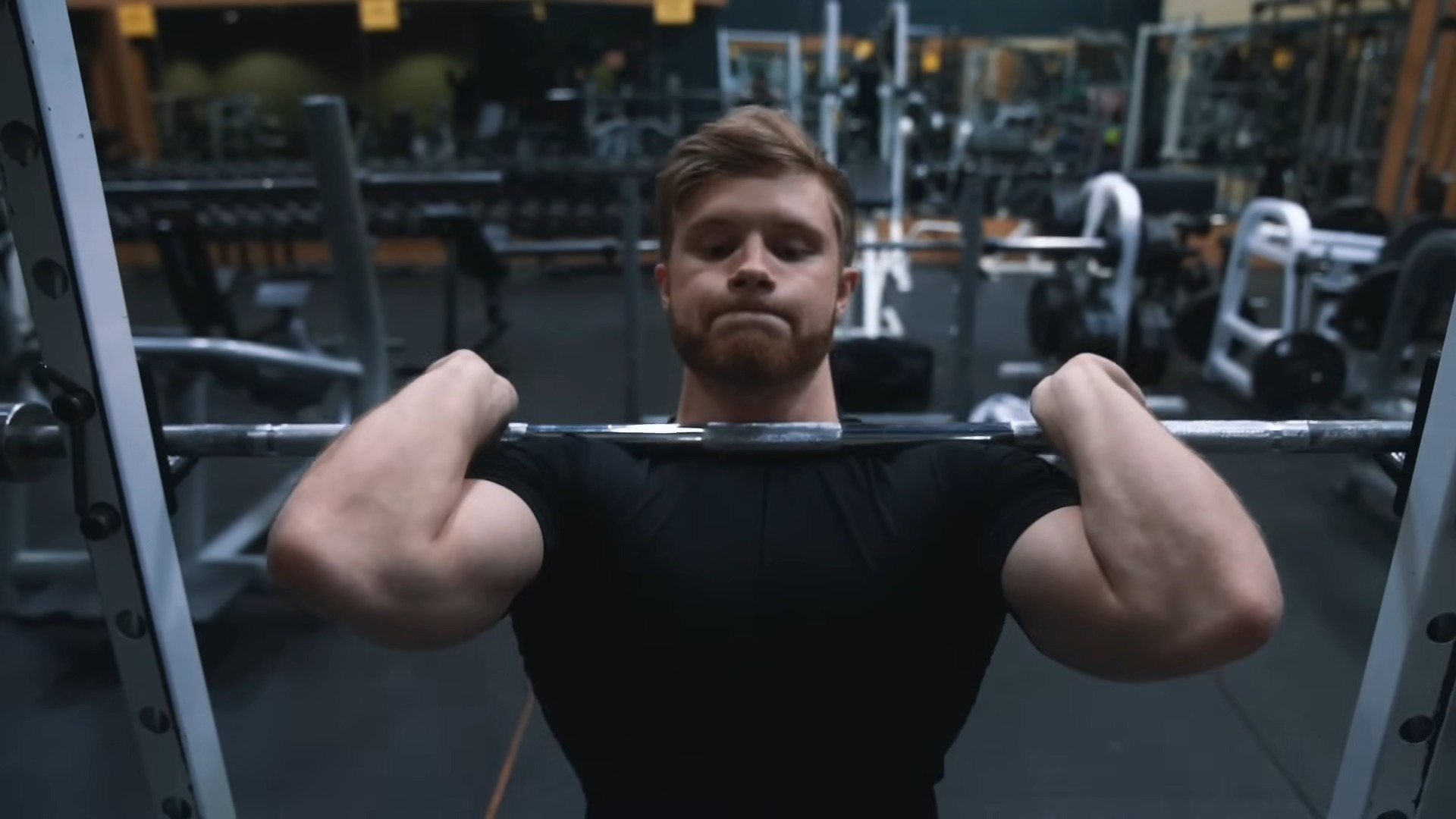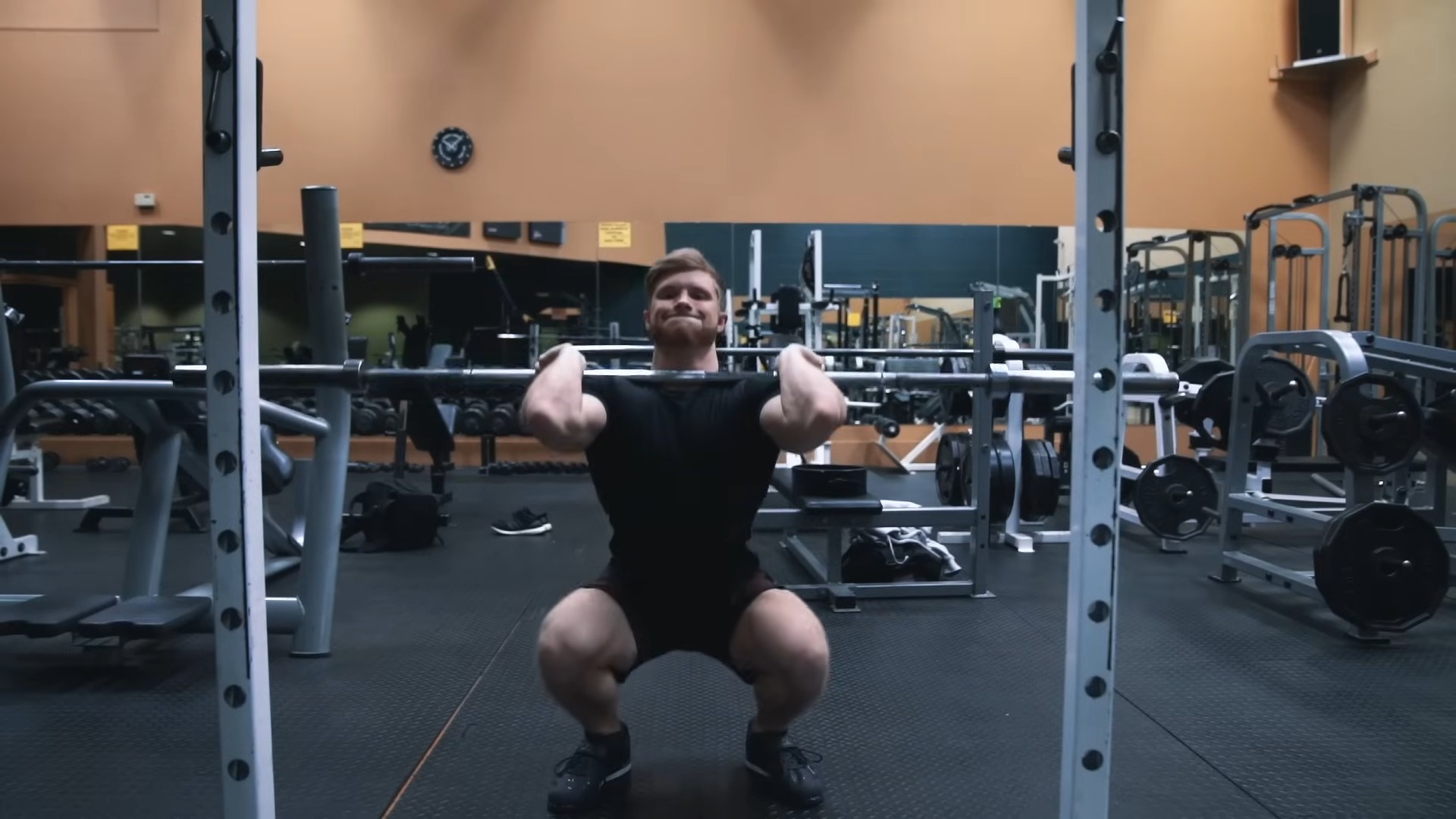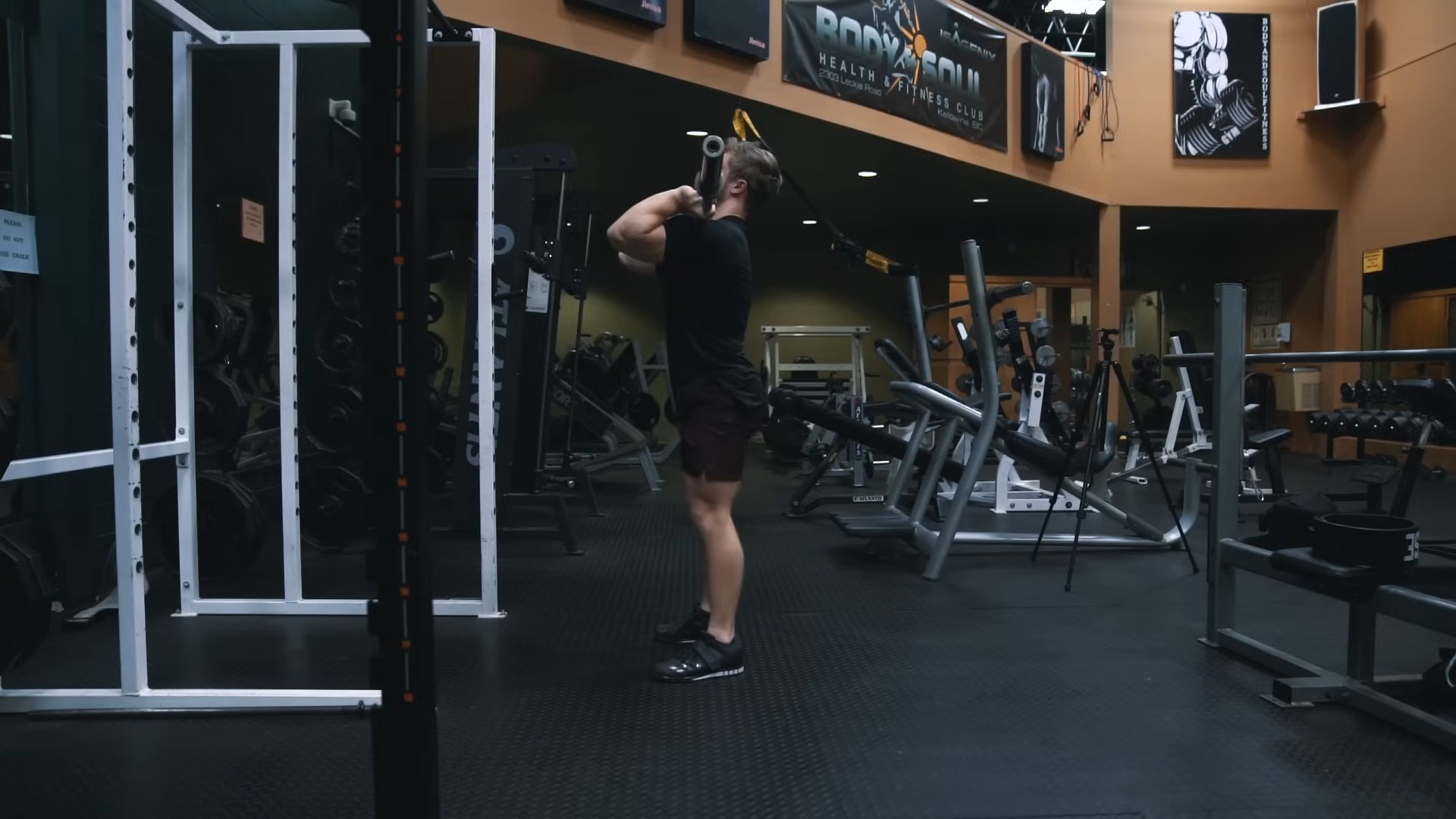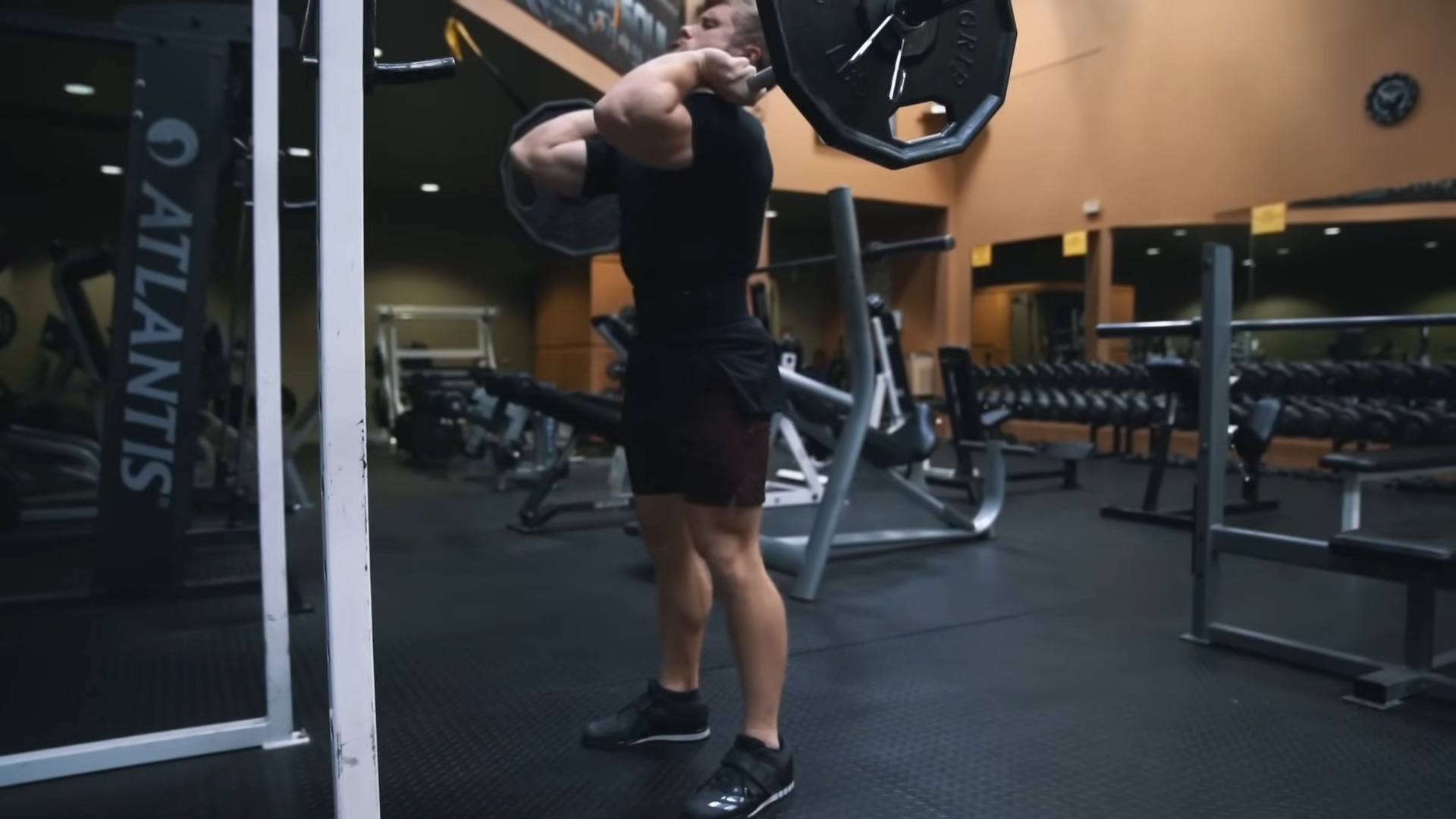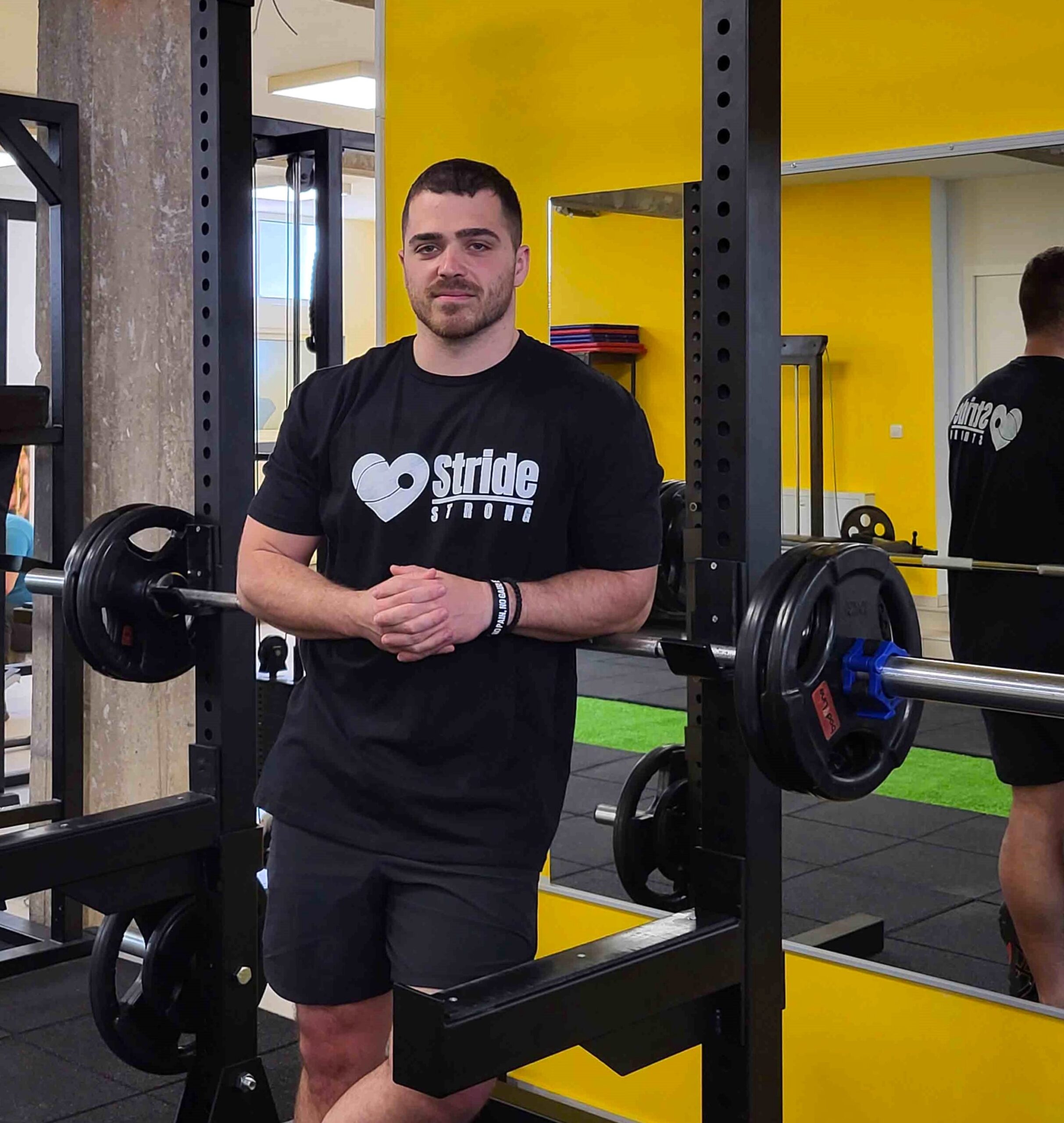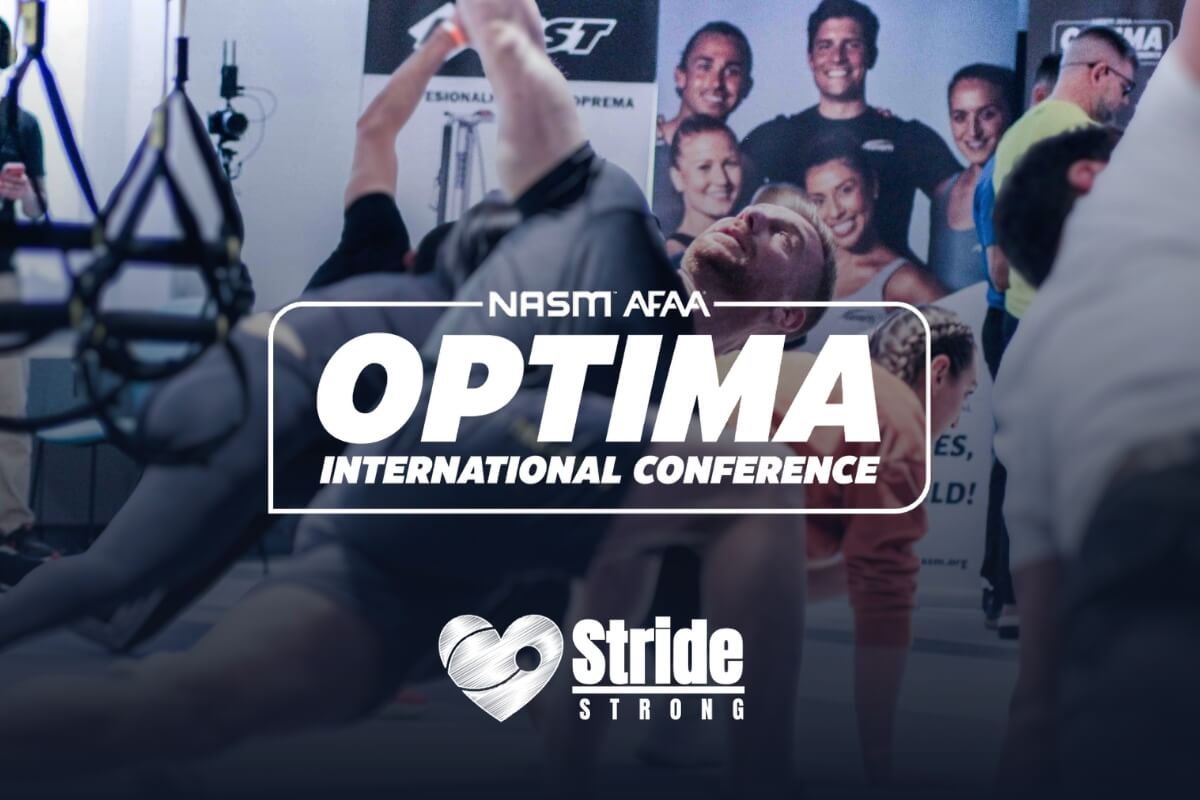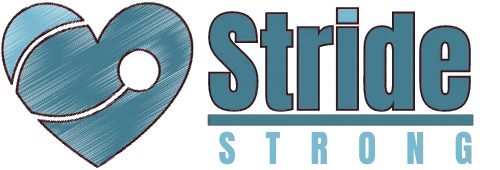As I’ve progressed in my fitness journey, I’ve learned the importance of refining my front squat technique and being mindful of errors that can derail my progress.
Mistakes in stance, depth, and progression can lead to underwhelming results or worse, lead to strains or sprains.
Addressing these errors and incorporating the right accessory exercises and stretches are crucial for technique improvement.
Maintaining a consistent routine with a focus on progressive overload ensures ongoing development while tracking progress helps to stay motivated and achieve front squat mastery.
1. Incorrect Bar Placement
First off, if you position the bar too high—almost hugging your neck—it’s a recipe for discomfort. Plus, it puts unnecessary pressure on your cervical spine, which isn’t great for the long haul. Trust me, I’ve felt that strain, and it’s no fun.
Now, going too low with the bar—away from that sweet ‘shelf’ created by your shoulders—is equally problematic. Why? Because the bar might decide to take a nosedive forward, leaving you scrambling to catch it. Not cool.
So, where’s the sweet spot?
Well, it’s right on those front deltoids, just outside the clavicles. Picture it: the bar cradled securely by the upper chest and shoulder muscles. That’s where the magic happens.
To get there, I actively press my shoulders forward, creating a little muscular ‘shelf’ for the bar. And guess what?
Keeping those elbows high throughout the movement adds extra stability. No wobbles, no drama—even at the bottom of the squat.
So, fellow gym enthusiasts, find that comfy spot, build that muscle memory, and squat like a champ!
2. Poor elbow positioning
Poor elbow positioning during the front squat can significantly detract from the exercise’s effectiveness, leading to a compromised form, reduced efficiency, and increased risk of injury.
The elbows’ role in the front squat is to secure the bar in place and assist in maintaining an upright torso, which is essential for proper execution of the movement.
When the elbows drop, it often results in the bar moving forward, shifting the lifter’s center of gravity and increasing the strain on the lower back.
| Aspect | Description | Consequences | Correction Strategy |
|---|---|---|---|
| Elbow Drop | Elbows fall below bar level. | The bar may roll off, causing forward lean and back strain. | Drive elbows up; strengthen upper back. |
| Limited Mobility | Shoulders and wrists can’t maintain position. | The form is compromised, increasing injury risk. | Add mobility exercises for shoulders and wrists. |
| Weak Upper Back | Lack of strength to support the bar. | Results in rounded back and bar instability. | Target upper back with specific exercises. |
| Incorrect Grip | Non-optimal grip width. | Difficult to keep elbows high, affecting stability. | Adjust grip width; consider clean grip. |
| Lack of Practice | Not enough focus on elbow position. | Inconsistent form and difficulty under load. | Practice with light weights focusing on elbows. |
3. Lack of depth
When I squat deep enough—where my hips go below my knees—I engage all the major lower body muscles: quadriceps, glutes, and hamstrings. This balanced activation promotes overall strength development.
Deep squats ensure a full range of motion, which is crucial for muscle growth and flexibility. It’s like oiling the joints of a machine—I move better and more efficiently.
Think of it as practicing movements I use in everyday life. Deep squats help me perform better when I bend down, lift things, or climb stairs.
Engaging my core and lower back during deep squats improves my balance and posture. These muscles support my spine, keeping me steady.
Challenges we face
- Sometimes my ankles, hips, or upper back don’t cooperate. Limited mobility makes it harder to squat deep.
- If my core and leg muscles aren’t strong enough, I struggle to control the squat. It’s like lifting a heavy box without sturdy handles—it feels wobbly.
- The weight in front squats can make me nervous. I might cut my depth short to stay stable. But deep squats are worth the effort!
4. Failing to maintain a vertical torso
When I keep my torso vertical, the weight is distributed properly across my lower body and core. This minimizes the risk of injury and ensures that the right muscles are working.
Imagine it’s like pushing a heavy box—You want to transfer force efficiently from my legs to the barbell. A vertical torso helps with that.
When I align the bar over the middle of my feet, it’s like finding the sweet spot. This balance makes the lift stronger and more stable.
Think of it as keeping my knees in line with my toes. It reduces stress on my knee joints and gets my quads, glutes, and core firing.
Challenges we face:
- If my core isn’t strong, my spine wobbles under the weight. It’s like trying to hold a plank with a shaky core.
- Sometimes my upper back doesn’t cooperate. I struggle to extend my spine, which messes up my posture.
- If these muscles aren’t up to the task, I might lean forward. It’s like a seesaw—I compensate by tipping to the back.
- Especially when I’m new to front squats, I might lean forward to stay steady. But practice makes perfect!
5. Neglecting upper body strength
When I do front squats, a strong upper body keeps my torso upright and steady. It’s like having a solid foundation for a building—I need it for good form.
By aligning everything correctly, I reduce the risk of awkward movements that could hurt me. It’s like driving carefully to avoid accidents.
Strong upper body muscles make my front squats more effective. Think of it as having a turbo boost—I can handle heavier weights with better technique.
What happens if I neglect upper body strength
- Rounded Back Trouble: Without a strong upper body, my back might round during squats. That’s like bending a fragile stick—it’s not ideal.
- Elbow and Bar Challenges: If my upper body isn’t up to par, keeping my elbows high and the bar in the right spot becomes tough. It’s like trying to balance a heavy tray without strong arms.
- Limited Muscle Activation: Weak upper body muscles mean less activation of the target muscles. I want the full benefit of my squats, so I’ll work on that strength!
